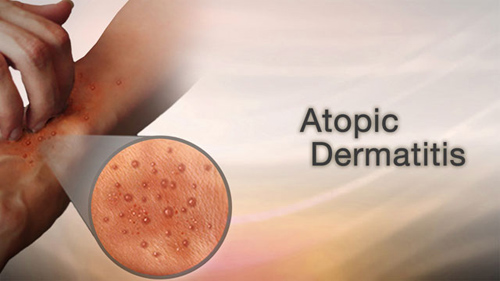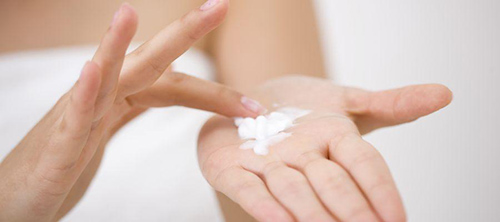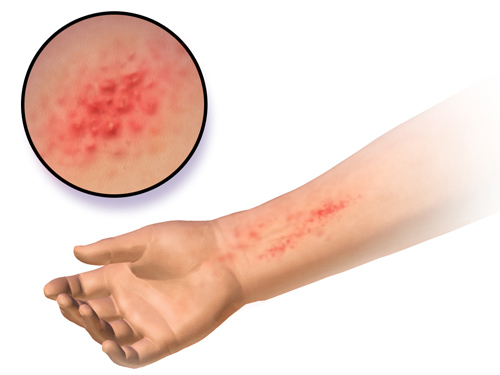Before we learn how to treat dermatitis, let us delve more into this condition. Dermatitis, frequently referred to as eczema, is an inflammation of the skin. Such disorders may result from an inborn sensitivity (inherited), exposure to some agent, or emotional stress. Thus, skin diseases have many causes and take many forms. Only the more familiar will be discussed.
- EXPERTLY FORMULATED – Dermoscribe’s seborrheic dermatitis cream is developed by our team of dermatologists. This eczema cream for adults is specially formulated to be applied to oil-producing areas such as the scalp, face, and center of the chest.
- MAXIMUM CONCENTRATION – Maximum concentration of active ingredients in our seborrheic cream. This cream has 3% Sulfur, 1% Hydrocortisone, and 3% Salicylic Acid.
The common characteristics of dermatitis are reddening, swelling, blistering, oozing, crusting, and itching. Depending on the condition, there may also be scaling and changes in skin color or pigments.
How to Treat Dermatitis: Atopic
This disorder is an inflammation of the skin resulting from an inherited hypersensitivity. Seventy-five percent of sufferers have relatives who are troubled with asthma, hay fever, and hives. While it may arise at any age, it is most likely to occur during infancy and childhood.

The disorder varies in intensity from time to time. In infants, it affects the face and outer surfaces of the arms and legs: In children, it usually affects the skin on the arms and legs’ inner surface. From adolescence onward, the lesions tend to be drier with the formation of plaques, especially in the arms and legs’ skinfolds, on the neck, face, hands, and crotch.
At all ages scratching further aggravates the situation. The problem tends to become less severe as one gets older. Several factors may provoke or intensify atopic dermatitis.
These include marked temperature changes (cold, weather, heat, and humidity), profuse sweating (from vigorous physical activity), exposure to certain chemicals (grease, solvents, detergents), excessive clothing (especially woolen and coarse-textured garments), psychological stress, and allergens. In general, food allergies and pollen carried in the air are not related to the disorder.

Since there is no cure, you must avoid anything that will trigger an episode while treatment is directed toward relieving the symptoms. Itching causes scratching, and scratching intensifies the itching, aggravates the lesions, and encourages infections.
Wet dressings help to clean the lesions and reduce itching while the eczema is wet and oozing. Bathing and soap may intensify the problem. Cleansing creams may be used instead. Constant lubrication with a soothing cream or ointment is a necessity. When washing clothes and bedsheets, avoid detergents, use a mild soap, and thoroughly rinse it.
A physician will instruct you on how to cleanse and care for your lesions. Cortisone ointments and purified tar preparations with cautious ultraviolet light exposure will reduce both the itching and the inflammation. In severe cases, oral antihistamines and steroids may sometimes be recommended. An appropriate antibiotic will control secondary infection.
How to Treat Dermatitis: Contact
As the name suggests, contact dermatitis is an acute inflammatory eruption resulting from direct contact with an irritant material or to some substance to which an acquired sensitivity (allergy) has developed.

- Irritant dermatitis can occur from many commonly used agents, including detergents, bleaches, toilet bowl cleaners, strong alkalis and acids, furniture polishes, aerosols, swimming pool disinfectants, adhesive bandages, rubber gloves, elastic components in stretch garments, industrial solvents, and oils.
- Allergic dermatitis results from a sensitivity to a substance developed from previous exposure. Almost 75 percent of the population reacts to contact with poison ivy and poison oak. One can acquire a sensitivity to virtually any substance: the dyes in leather, the elastic in garments, fingernail polishes, and metals in jewelry, such as nickel.
Dermatitis from irritants causes reddening, blistering, drying, and cracking. Painful fissures and ulcers may develop. Itching, if present, is mild. You have become sensitive in response to a substance; the skin becomes red and small to large blisters, eventually breaking, oozing, and weeping. The eyes and face may be puffy. The itching may be intense. As healing occurs, the lesions will dry and crust. Allergies to metals develop slowly and cause itching, scaling, and redness.
Try to avoid contact with any substance to which you respond adversely. Try a patch test to determine whether you will react to a substance. Put a drop or a tiny amount of the material on a very small piece of gauze, contact the skin of your abdomen or inner thigh, cover the gauze with wax paper, and attach it with adhesive tape.
Leave it in place for forty-eight hours unless itching and irritation occur earlier, at which point it should be removed. If you do not react, the substance is likely safe to use.
Your physician may be able to do sensitivity tests for things you have become allergic to. Careful observation of the circumstances under which you develop dermatitis will significantly aid your doctor in recognizing the offending materials.

For irritant dermatitis, protect yourself from exposure. Wear cotton gloves inside rubber gloves when doing dishes or other chores in which your hands might come into contact with an irritant. Should you become exposed, wash the material off as quickly as possible. For poison oak or ivy exposure, use soap to remove the waxy or resinous toxic material, and thoroughly wash all clothes.
Many procedures for treating contact dermatitis are similar to those discussed under atopic dermatitis. Wet dressings, mild ointments, and calamine lotion should reduce itching and bring relief.
Your physician can test for agents to which you might have become sensitive. Steroid ointments and antihistamines may be recommended depending on the severity of the inflammation. An appropriate antibiotic will care for a secondary infection.
DISCLAIMER: All content on this website is presented solely for educational and informational objectives. You should not rely on the information provided as a replacement for advice, diagnosis, or treatment from a qualified medical expert. If you are pregnant, nursing, or have any preexisting medical concerns, you should talk to your doctor before using any herbal or natural medicines.
REFERENCES
- Hardinge, Mervyn G and Harold Shryock. “Family Medical Guide.” Hardinge, Mervyn G and Harold Shryock. Family Medical Guide. Ed. Marvin Moore and Bonnie Tyson-Flynn. Vol. three. Oshawa; Washington, D.C.; Hagerstown: Pacific Press Publishing Association; Review and Herald Publishing Association, 1999. Three vols. 242, 244, 245, 246. Print. [how to treat dermatitis]
- National Institute of Arthritis and Musculoskeletal and Skin Diseases: https://www.niams.nih.gov/
- American Academy of Dermatology: https://www.aad.org/
Last update on 2025-06-04 / Affiliate links / Images from Amazon Product Advertising API






